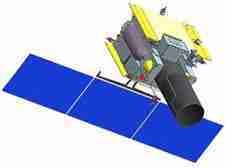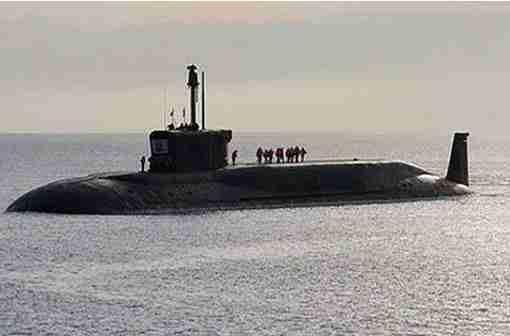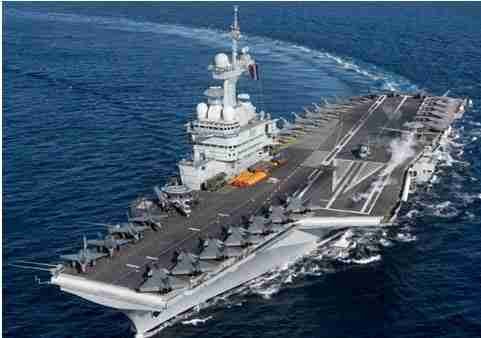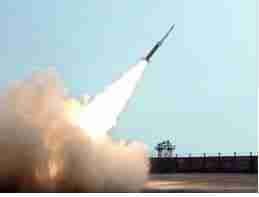India’s GISAT-1 (Geo Imaging Satellite) Weighing 2,268 kg, is likely to be launched in May, onboard GSLV-F10 rocket. This will be India’s first earth-observing satellite operating from geostationary orbit to facilitate continuous observation of the Indian sub-continent and quick monitoring of natural hazards and disasters.

It carries an imaging payload consisting of multi-spectral (visible, near infra-red and thermal), multi-resolution from 50m to 1.5km. It will provide pictures of the area of interest on a near real-time basis including border areas under cloud-free conditions, at frequent intervals. Once placed in orbit, selected sector-wise image will be available every 5minutes and the entire Indian landmass image every 30minutes at 50m spatial resolution.
GISAT is built on a modified I-2K (I-2000) Bus
Its payload consists of:
- 700mm Ritchey-Chretien telescope based on the Cartosat 2 design
- Array detectors in VNIR, SWIR and LWIR bands
- High-resolution multi-spectral VNIR (HRMX – VNIR): 50 m resolution
- High-resolution multi-spectral (HRMX – LWIR): 1.5 km resolution
- Hyper-spectral VNIR: 320m and 192m resolution
- Hyper-spectral SWIR: 320m and 192m resolution
- Camera electronics and data handling system
- Electronically steerable transmit antenna system
- High agility platform to enable large payload steering requirements
GISAT -1 carries an imaging payload consisting of multi-spectral (visible, near infra-red and thermal), multi-resolution from 50m to 1.5km.
The satellite was scheduled to be launched in April, but the schedule has been pushed to May due to a technical snag which ISRO states is of a minor nature. A second satellite, GISAT 2, is planned to be a repeat of the first satellite.
India’s Nuclear Powered Attack Submarine Programme
INS Arihant (which means vanquisher of enemies, in Sanskrit), launched in July 2009, was India’s first indigenously built nuclear powered ballistic missile submarine. Weighing 6000 tons, the submarine was built under the Advance Technology Vessel (ATV) project at the Ship Building Centre, Visakhapatnam at a cost of USD 2.9 billion and was developed by the Indian Navy, DRDO and the Bhabha Atomic Research Centre (BARC).
Russian designers assisted in building the vessel. INS Arihant became fully operational with a successful deterrence patrol in 2018. This was an important milestone as it partially completed India’s long-awaited nuclear triad after the land-based Agni missiles and fighter jets like Mirage 2000s and now the Rafale fighter aircraft.
Later this year, India will commission its second nuclear-powered submarine INS Arighat, armed with nuclear ballistic missiles (Submersible Ship Ballistic Nuclear – SSBN). INS Arighat was launched in 2017 and is now completing the final stages of sea trials. It has four missile launch tubes, capable of carrying 12 K-15 Submarine Launched Ballistic Missiles (SLBMs) or four K-4 SLBMs.
Later this year, India will commission its second nuclear-powered submarine INS Arighat, armed with nuclear ballistic missiles.
The former has a range of 750 km and the latter a range of 3,500 km. With the K-4 missile, India has the ability to target all of Pakistan and several parts of China, making it a suitable deterrent. India is also working on the K-5 with a range of 5000 km, which will give India the ability to hit strategic targets in China from the Indian Ocean itself. The missile is, however, yet to be tested.
Besides INS Arighat, two more SSBNs, are under final assembly at the Ship Building Centre in Visakhapatnam. These submarines are slated to carry eight 3,500 km range K-4 missiles. They will also displace 1,000 tonnes more than the two submarines.

Besides the above, India will soon also build three nuclear-powered attack submarines (Submersible Ship Nuclear – SSN), approval for which is awaited by the CCS. This will be followed by approval for another three attack submarines at a later stage, to counter China’s expanding naval footprint in the Indian Ocean. The SSNs are armed with missiles with conventional warheads.
They will have a displacement capacity of 6,000 tonnes. The SSN is a hunter-killer of enemy warships and submarines and does not have a strategic role like the SSBN. It can quietly track an enemy target for extended ranges and take it out as and when required. It is also equipped to hit land targets with long-range cruise missiles. The cost of each SSN is about Rs 15,000 crore.
India currently operates a solitary SSN, INS Chakra, which was taken on a ten-year lease from Russia in April 2012. In march 2019, India inked a deal worth over USD 3 billion to lease a more advanced SSN to eventually replace INS Chakra.
India is also developing a new series of SSBNs, which will be much larger and better armed than the Arihant-class SSBNs. Currently identified in news reports as S-5, this type will have a displacement of 13,500 tonnes. Reports say the type will be capable of carrying 12 long-range nuclear-tipped ballistic missiles. The construction of SSBNs is a separate project under the PMO.
EXERCISE VARUNA
Indian and French navies had a three-day mega war game in the Arabian Sea (from April 25, 2021) in the backdrop of rising concerns over China’s growing maritime presence in the Indian Ocean region. The exercises included complex naval operations like advanced air defence and anti-submarine drills, intense fixed and rotary wing flying operations, tactical manoeuvres, surface and anti-air weapon firings and other maritime security operations. This was the 19th edition of the Varuna exercise between the two navies, which showcased the increasing levels of synergy, coordination and interoperability between the two navies.

The exercise underscored the shared interests and commitment of both nations in promoting maritime security in the Indo-Pacific and bears testimony to the vitality of the bilateral strategic partnership. France deployed its nuclear-powered aircraft carrier Charles de Gaulle, and its entire carrier strike group for the exercise.
This included Horizon-class air defence destroyer Chevalier Paul, Aquitaine-class multi-mission frigate Provence and command-and-supply ship Var, reflecting the seriousness of the drill. The Indian Navy deployed guided-missile stealth destroyer Kolkata, guided-missile frigates Tarkash and Talwar, fleet support ship Deepak, a Kalvari-class submarine and a sleet of P-8I long range maritime patrol aircraft.
RAMJET LAYS PATH FOR LONG RANGE AAM
When DRDO successfully tested the technologies that go into solid Fuel Ducted Ramjet (SFDR) in March this year, it laid, the path for many more. With this, India will be able to build long-range air-to-air missiles (AAM) capable of shooting down enemy aircraft hundreds of kilometres away. The flight demonstration was carried out off the coast of Odisha, validating key missile subsystems, including the booster motor, nozzle-less motor and the basic SFDR technology.

The SFDR flies at supersonic Mach numbers that are higher than current aircraft, so even tail chase is possible. This widens the missile’s ‘no escape zone’, which is the envelope within which the missile, once it locks onto the target, does not let its target get away. The propulsion system is designed to provide high specific impulse beyond 1,000 seconds, which will enable longer ranges for the missile. The DRDO initially began developing SFDR technologies as a joint development project with Russia’s defence export agency, Rosoboronexport. After jointly developing state-of-the-art propulsion technology, and high-tech sub-systems such as a nozzle-less booster, fuel flow controller and boron-based sustainer, the DRDO is now going it alone.
India’s missile development is a huge success story. The DRDO is now planning to equip India’s Tejas Mark 1A fighter aircraft with its home-grown Astra Mark-1 medium-range AAM, which will enable engagement of airborne targets at standoff ranges of 60-70 km. The Tejas Mark 2 fighter will field the Astra Mark 2, which is likely to have a range of 150-160 km. This puts the missile in the league of the Meteor AAM that equips the Rafale fighter. However, once the SFDR technology is developed, an SFDR-based AAM will have a range of 350 km. This is a huge leap forward for the DRDO and for India’s defence capability.

